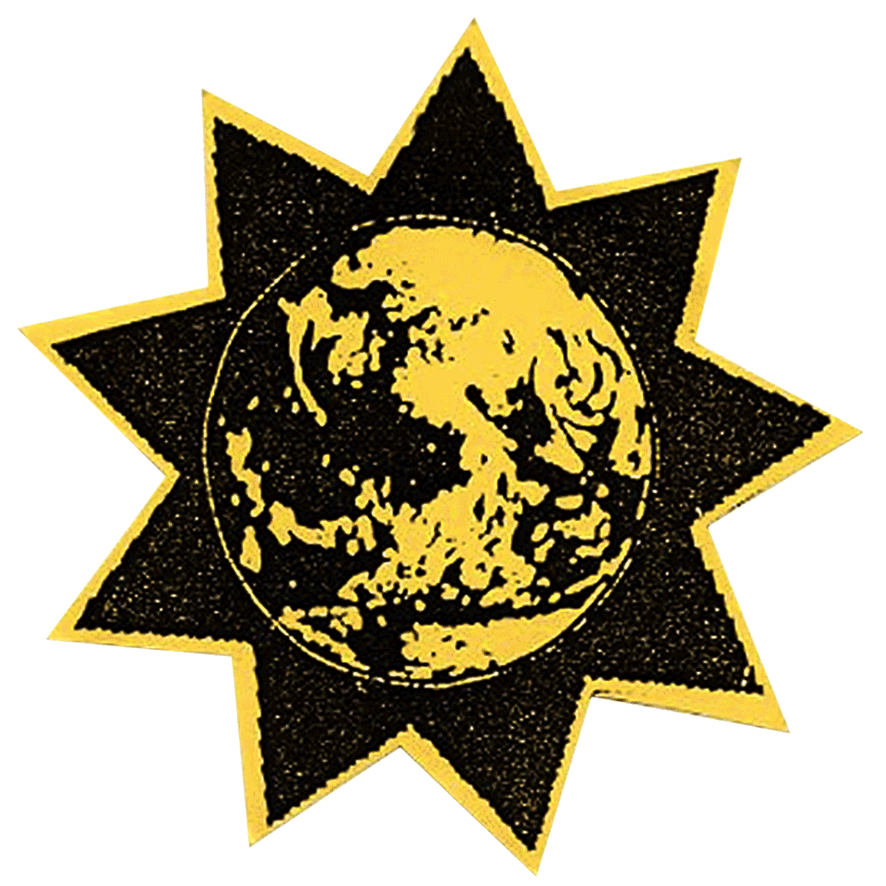In 2019, on the last version of the design fair Impresionante, the designer, artist, and musician Pablo Castro launched Flyer Chileno. The book goes through ten years of Chilean techno culture trough design, with a selection of the hundreds of flyers and leaflets circulating around Santiago between
1993 and 2003. In a decade where social media was not on the radar, it was the only way to know what went on in the electronic nightlife, which included parties attended by music celebrities like Ricardo Villalobos or Jorge González. We talked with Pablo about the events that marked him during
those years, his project, and thoughts on the current Chilean and Latin American electronic scene. We also addressed the connection between
electronic music and social protest, and the new designs and sounds that catch his attention nowadays.
How was Flyerchileno born?
The idea came to me in 2014, so it took 5 years to set, mainly because I was expecting to get funds for
the printing. Luckily, halfway through last year, I made it. My primary motivation was how much Iwanted to see my own work – as a graphic designer and flyer creator on the ’90s – printed on a display that gathered the ephemeral visual work of the time.
What caught your attention the most during the time you were gathering the visual information to create the book?
I was intrigued by the fact that many people still kept their flyer collections from the ’90s. It was a common thing at the time, to keep the leaflets you liked the most or the ones that meant the most to you. But to keep them for 20 years, that was something impressive.
The book is full of memories and reviews from well-known artists from that decade. How is your relationship with them today?
I know most of the interviewees and collaborators personally. Time has passed – in a good way – and even if we haven’t seen each other for years, reuniting is always pleasant—especially today, with social distancing.
Is there a particular moment you recall from the decade?
The time when I produced Cristián Vogel’s visit. Before the year 2000, he was well looked at in the electronic and techno music scene worldwide. Crisitán performed three times in Santiago, and in one of these times, he shared the stage with Ricardo Villalobos and DJ Magic. There is a photo of that moment around somewhere.

If you had to choose three flyers of all the ones in the book, which one would it be? Why?

This one, because it is beautiful. It comes from such a Chilean idiosyncrasy. It was Andrés Mardones’ idea, founder of Casa Club, one of the leading techno, electronic and contemporary music that has ever existed in Chile. I had to design it, and it really came with a teabag inside. It is from 1998.

Supersalon flyers were also done by me. This club established the drum & bass scene in Santiago. Nights in the venue were memorable, and I can say that I have never enjoyed broken rhythms like back then. This flyer is from 2003, and it also comes from a Chilean idiosyncrasy: the image of a melancholic Buddy Richard and a quote from one of his romantic anthems.

The Ultramedia flyers circulated around the times of the first techno parties in Santiago. We are talking about the year 1993. Photocopies were used for printing since it was what was at hand, and it was cheap. Ultramedia was one of the first collectives organizing these kinds of events. They also generated
a techno space on the event Contacto, held by Zona de Contacto, from El Mercurio. There is a YouTube video that registered part of the evening, and you can listen to the DJs mixing Beastie Boys and Aphex Twins.
Is it nostalgic for you that flyers nowadays are digital and not printed?
Not really. The visual possibilities, the tools that now exist, the Internet, and all the information that moves around makes it possible to create way more entertaining and elaborate material. The printing of flyers for techno parties in the ’90s was a product of its time, reflecting that historical moment. I know just a few people who might state that those times were better than those we live in now. Or who wished to go back to those years.
More protest techno, less elite electronics
You were very active in the techno scene during the ’90s. What do you think differentiates those years with the electronic scene today?
The Internet. I believe it is the means that make the difference between how the information got around in the ‘90s versus today. The music is more or less the same. Honestly, the rhythms and styles that are played today at clubs are very much like the ones of the ’90s. You could totally put together a
set with music made before the year 2000 today, and it would fit perfectly. It is the Internet, actually, that allows people to get to know new labels, new artists, download music and, above all, allows music produced in unknown territories – like the south of the globe- have space and become known.
What do you think sets apart the Chilean techno scene from the rest of the world?
Not much. Techno sounds the same in all corners of the world. The same instruments are used, the same machines, the same programs. It is in part beautiful because techno is read the same way everywhere. It is like a universal language. Sometimes I find it boring. I have been bumping into techno music made in Portugal recently, and its ethnographic shades are fascinating. The same thing happens with techno produced in Africa. Colombia, Center America, Argentina, and even Spain attract me in
terms of the Latin aspects of their sound, including some reggaeton and tropical music. I have enjoyed Chilean techno with social content, which criticizes the system. I believe the Latin American and Chilean production should aim towards including more protest elements in their sound because these are elements that unite our territories from its origins. I like the fact that through their social media, Chilean producers manifest political and anti-systemic messages. Recently, it has become a commonplace that has brought techno and electronic music producers together. Regarding the sound, I
like the dark and emo shades they include in their work.
What do you think explains the political and protest twist in electronic music?
Right now, the tools used to make music are mostly domestic. Getting software and a controller is easy, and there is more access for creative and musically curious people. Techno today is part of everyday, mainstream creation of the working class. This was very different in the late ’90s, or beginning of the 2000s. Back then, electronic music was elite, and it was all about hedonism, pleasure, and having a good time with your brothers and cousins. I consider it relevant to refer to the piece Váyanse, from Alejandro Paz, a kind of techno manifesto from the “lower class.” In the social awakening of last October, musical creation with beats and electronic equipment was fundamental. You only have to listen to what my idols, Las Tesis, created. I like the fact that parties are not yet massive, that they still belong to a somewhat dark, underground scene of uncomfortable and inquisitive people. These characteristics will never belong to the mainstream circuit.
Could you mention some electronic music referents that call your attention these days?
From Portugal, I find inspiring the work of Príncipe Records label. What goes on there is very interesting, regarding music, the way it is produced, the evidently mixed identities and ethnicities. You can tell there is a Latin American influence. I also like they work the art for every record. A gestural drawing, hand made lettering, and that’s it. In Chile, I am interested in the work of labels such as Replicante Cintas, Poxi Records, No Problema Tales, and Infinito Audio.
At a local and global level, what design trends within the electronic circuit catch your eye?
In Chile, I like the work of fffuturo, Favela Clash’s flyers, Neoperreo’s logo, the visual and merchandising work of Naafi, or the Hardcore Soul book. I also appreciate the work of Peruvian designer, Jonathan Castro. The main influences for my flyer design came from Russian constructivism,
Bauhaus, Neville Brody, Émigré, The Designers Republic, Los hermanos Larrea, and manga.
Considering your experience in party production, and the pandemic taking its toll on theindustry, what are your thoughts on online music?
I hope this is over because it would be unfortunate to get used to watching a DJ set or live music transmitted online. It is ok to occasionally enjoy streaming if geographic distance does not allow you to
go to a concert or can’t afford a ticket, but to have this become a regular thing… I have the privilege to be able to stay home with no shortage of any kind. I miss going out and socializing, but that has always
been a luxury. Not being able to have physical contact with other people has collapsed our understanding of recreation and having fun at a club or a party.

